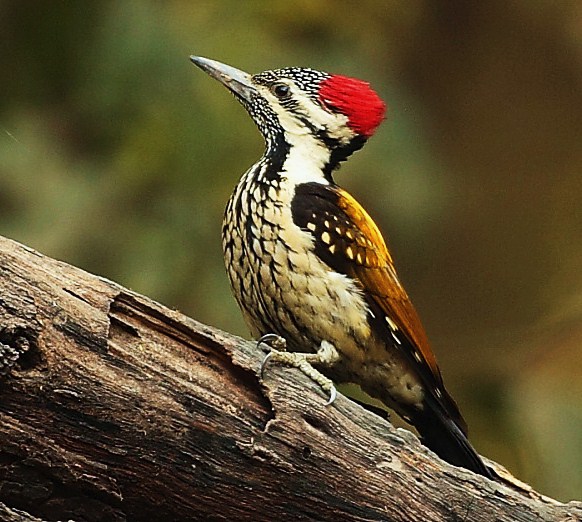Dinopium benghalense
 |
| Photo by Sagar Mhatre (Foto Community) |
Common name:
black-rumped flameback (en); pica-pau-de-Bengala (pt); pic du Bengale (fr); pito bengalí (es); orangespecht (de)
Taxonomy:
Order Piciformes
Family Picidae
Range:
This species is found throughout India and Sri lanka, west to Pakistan and east through Nepal and Bangladesh and into Myanmar.
Size:
The black-rumped flameback is 26-29 cm long and weighs 90-130 g.
Habitat:
This species is found in various types of open forests, as well as coconut and palm plantations and in urban parks, gardens and wooded avenues. They are present from sea level up to an altitude of 1.700 m.
Diet:
Black-rumped flamebacks forage both on the ground and in the canopies, mainly eating beetle larvae, termites, ants, weevils and spiders. They also eat fruits and occasionally nectar.
Breeding:
These birds breed in February-July. They nest in a hole, excavated by both sexes on a tree or more rarely in mud embankments. There the female lays 2-3 glossy white eggs which are incubated by both parents for 11 days. The chicks are cared for by both parents with regurgitated food and fledge 19-21 days after hatching.
Conservation:
IUCN status – LC (Least Concern)
This species has a very large breeding range and, although the global population size has not been quantified, it is reported to be common to locally common throughout this range. The population is suspected to be stable in the absence of evidence for any declines or substantial threats, so the black-rumped flameback is not threatened at present.







